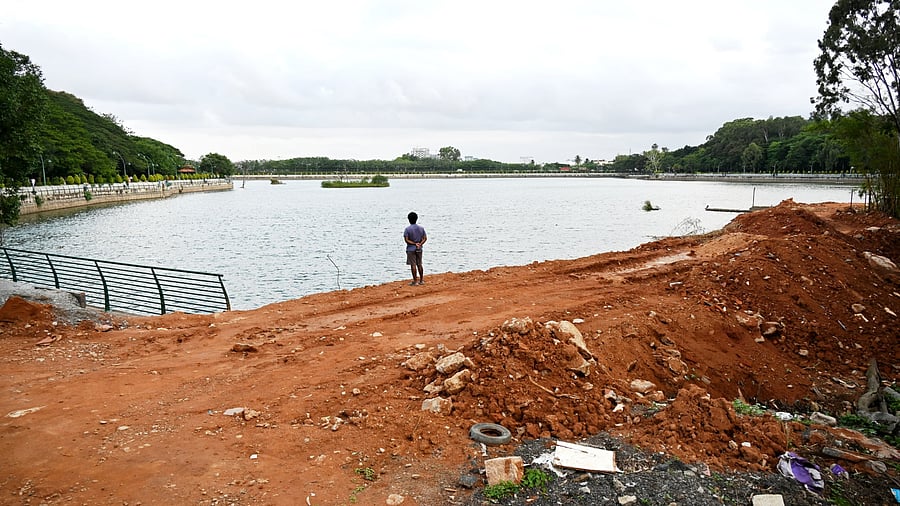
Experts warn that the project could threaten vital birdlife and biodiversity at Sankey Tank.
Bengaluru: The Bruhat Bengaluru Mahanagara Palike (BBMP) has proposed constructing a gabion wall around Sankey Tank, drawing criticism from ecologists and local residents.
Local residents and experts expressed concerns that this move could threaten the last remaining mudbank in the lake, a vital ecological zone that supports bird species such as cormorants, herons, and moorhens.
While the gabion wall may be considered less intrusive than concrete, it would still eliminate the only natural, unconcretised stretch of shoreline left in the tank. Kimsuka Iyer, a member of Sadashivanagar Residents’ Welfare Association (SRWA) and Citizens for Sankey, described the mudbank as “a crucial roosting and nesting area” and warned that its removal would destroy one of the few remaining natural habitats in the lake.
“This is not just about one patch of mud. It reflects a deeper issue of ecological mismanagement. There’s a lack of coordination between lake authorities, and decisions are often made without scientific oversight or long-term conservation thinking,” she said.
Activists also opined that the BBMP should seek expert scientific advice before undertaking works at lakes. “There is no ecological expertise within the BBMP team handling lake projects,” said environmental advocate Preeti Sunderajan.
“Bodies like the Karnataka Tank Conservation and Development Authority (KTCDA) should be involved to ensure scientifically sound decisions.”
Sunderajan cited examples of Jakkur and Puttenahalli lakes where natural mudbanks are still in place and function effectively during heavy rains. She argued that similar nature-based designs could be adopted across the city instead of replacing natural lakebeds with hard infrastructure.
The issue is not limited to Sankey Tank. At lakes such as Yediyur, concretized edges have already led to ecological degradation.
Conservationist Ramaprasad V said that many rejuvenation projects are being carried out under Corporate Social Responsibility (CSR) funding without scientific planning or public accountability.
“CSR spending must be transparently monitored,” Ramaprasad said.
“Beautification should not come at the cost of biodiversity. The public also needs to understand the environmental services lakes provide — from flood control to groundwater recharge.”
However, BBMP officials maintained that the BBMP had enough expertise and the decisions were practical.
BBMP Executive Engineer Nitya said that gabion walls are used in locations where space constraints make it difficult to build natural mud banks.
“Mud banks require sloped construction and take up more space, which reduces the lake’s water-holding capacity. In such areas, gabion walls are a practical solution,” she said.
She also clarified that the gabion structures are made of rocks, and the wires binding them are composed of non-corrosive material that will not pollute the water or harm wildlife. “All engineers in the BBMP’s lake department are well-versed in both civil and environmental engineering,” Nitya added.